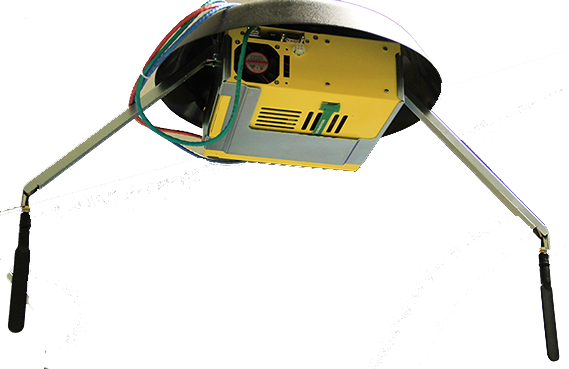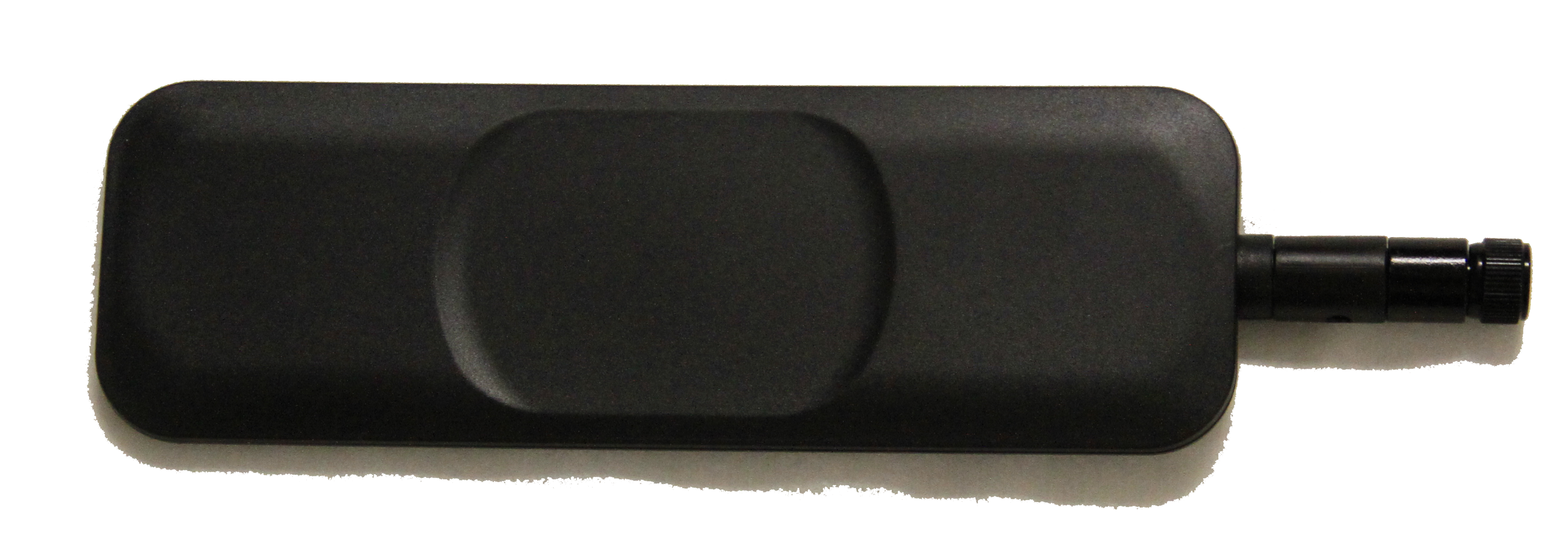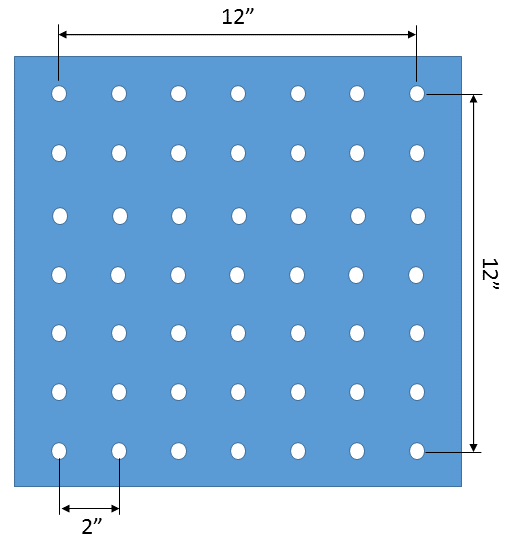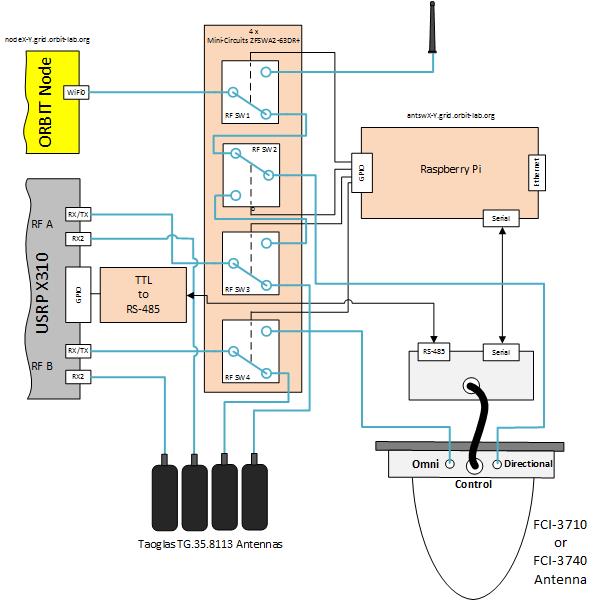| Version 10 (modified by , 9 years ago) ( diff ) |
|---|
Table of Contents
Antennas
In addition to chip antennas on various USB attached wireless devices, three types of external antennas are attached to various RF devices on the nodes.
WiFi Antennas
Most of the internal WiFi devices are attached to dual band, blade style omni-directional antennas shown in Figure 1. These are mounted at the end of the two rods extending at the 45 degree angle downwards from the node harness as shown in Figure 2 with the distance between the two antenna rods (i.e. the two internal WiFi devices) of 26 inches.
These antennas have typical donut-shaped shape radiation pattern with an average 2 (@ 2.4 GHz) and 4 (@ 5GHz) dBi of gain.
Multi-standard Antennas
Number of SDR units in the grid have multi-band (i.e. multi-standard) antennas covering most of the WiFi and 4G bands. They are mounted on the square plate about 12 inches apart (in horizontal plane) as shown in Figure 4.
Electronically Steerable Antennas
4 nodes with USRP X310 devices in addition to standard antennas (WiFI for two internal devices and multi-standard paddle antennas) are equipped with a electronically steerable antenna and a block of RF switches facilitating antenna selection.
The 2.4-2.5 GHz Fidelity Comtech FCI-3740 Phased Array device actually comprises of:
- Directional antenna with 14.5 dBi of gain and 127 electronically selectable antenna patterns
- Omni-directional 9 dBi antenna
- Embedded GPS
The antenna is managed through
Antenna Switching Hardware
The antenna switching hardware is shown in Figure 6. It consist of: bank of RF switches, RS-485 drivers and Raspberry PI as an embedded controlled. This hardware enables remote antenna selection and steering.
The bank of switches is used to route both nodal WiFi and X310 antenna feeds to either regular antennas or to directional or omni-directional antennas on FCI-3740. The table below shows switch states and corresponding antenna selections (blanks indicate the particular switch state does not matter).
Configuration SW 1 SW 2 SW 3 SW 4 Node Wifi 0 → standard antenna RF 1 Node Wifi 0 → directional (FCI antenna) RF 2 RF 1 USRP RF A → standard antenna RF 1 USRP RF A → directional (FCI antenna) RF 2 RF 2 USRP RF B → standard antenna RF 1 USRP RF B → omni (FCI antenna) RF 2
The embedded controller is used to provide IP/http based remote management. Directional Antenna AM Service is used by experimenters to manage the antenna selection and steering.
Attachments (9)
-
ESA.jpg
(123.1 KB
) - added by 9 years ago.
Directional Antenna Mounting
-
DirAnt-1.0.jpg
(44.6 KB
) - added by 9 years ago.
Directional Antenna Switching
-
Ant1.png
(827.8 KB
) - added by 9 years ago.
Omni directional 2.4/5 GHz antenna
-
Ant2.png
(2.5 MB
) - added by 9 years ago.
Multi-band (4G) antenna
-
Ant1.pdf
(535.9 KB
) - added by 9 years ago.
WiFi Antenna Spec. Sheet
-
Ant2.pdf
(6.7 MB
) - added by 9 years ago.
Multi-band Antenna Spec Sheet
-
NodeWiFi.png
(127.4 KB
) - added by 9 years ago.
Node WiFi Antennas
-
MountingPlate.png
(9.5 KB
) - added by 9 years ago.
Multi-band Antenna Mounting Plate
- APAMSJ-137.pdf (2.0 MB ) - added by 9 years ago.






